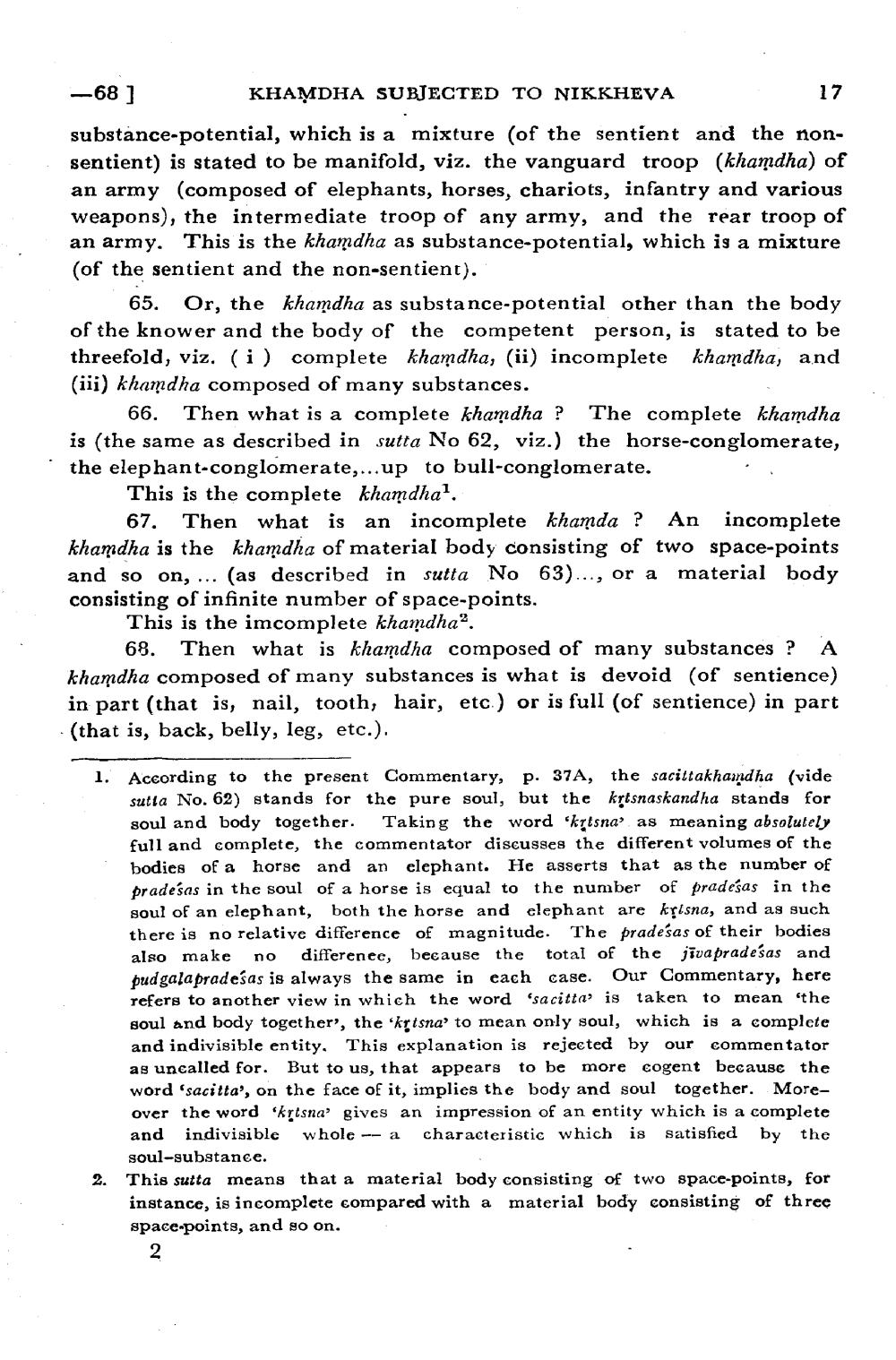________________
-68]
KHAMDHA SUBJECTED TO NIKKHEVA
substance-potential, which is a mixture (of the sentient and the nonsentient) is stated to be manifold, viz. the vanguard troop (khamdha) of an army (composed of elephants, horses, chariots, infantry and various weapons), the intermediate troop of any army, and the rear troop of an army. This is the khamdha as substance-potential, which is a mixture (of the sentient and the non-sentient).
17
65. Or, the khamdha as substance-potential other than the body of the knower and the body of the competent person, is stated to be threefold, viz. (i) complete khamdha, (ii) incomplete khamdha, and (iii) khamdha composed of many substances.
66. Then what is a complete khamdha? The complete khamdha is (the same as described in sutta No 62, viz.) the horse-conglomerate, the elephant-conglomerate,...up to bull-conglomerate.
This is the complete khamdha1.
67. Then what is an incomplete khamda ? An incomplete khamdha is the khamdha of material body consisting of two space-points and so on, ... (as described in sutta No 63)..., or a material body consisting of infinite number of space-points.
This is the imcomplete khamdha".
68.
Then what is khamdha composed of many substances ? A khamdha composed of many substances is what is devoid (of sentience) in part (that is, nail, tooth, hair, etc.) or is full (of sentience) in part (that is, back, belly, leg, etc.).
1. According to the present Commentary, p. 37A, the sacittakhamdha (vide sutta No. 62) stands for the pure soul, but the kṛtsnaskandha stands for soul and body together. Taking the word 'kṛtsna' as meaning absolutely full and complete, the commentator discusses the different volumes of the bodies of a horse and an elephant. He asserts that as the number of pradesas in the soul of a horse is equal to the number of pradesas in the soul of an elephant, both the horse and elephant are kɣisna, and as such there is no relative difference of magnitude. The pradesas of their bodies also make no differenee, because the total of the jivapradesas and pud galapradesas is always the same in each case. Our Commentary, here refers to another view in which the word 'sacitta' is taken to mean the soul and body together', the 'krtsna' to mean only soul, which is a complete and indivisible entity. This explanation is rejected by our commentator as uncalled for. But to us, that appears to be more cogent because the word 'sacitta', on the face of it, implies the body and soul together. Moreover the word 'kṛtsna' gives an impression of an entity which is a complete and indivisible whole a characteristic which is satisfied by the
2.
soul-substance.
This sutta means that a material body consisting of two space-points, for instance, is incomplete compared with a material body consisting of three space-points, and so on.
2




